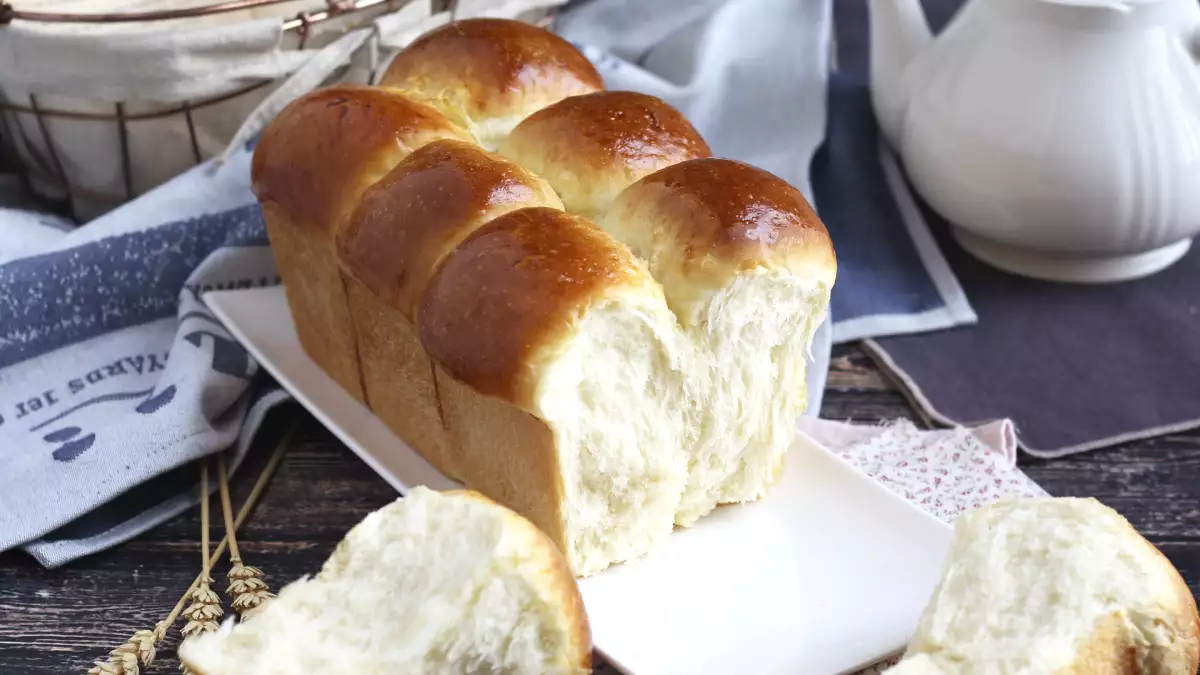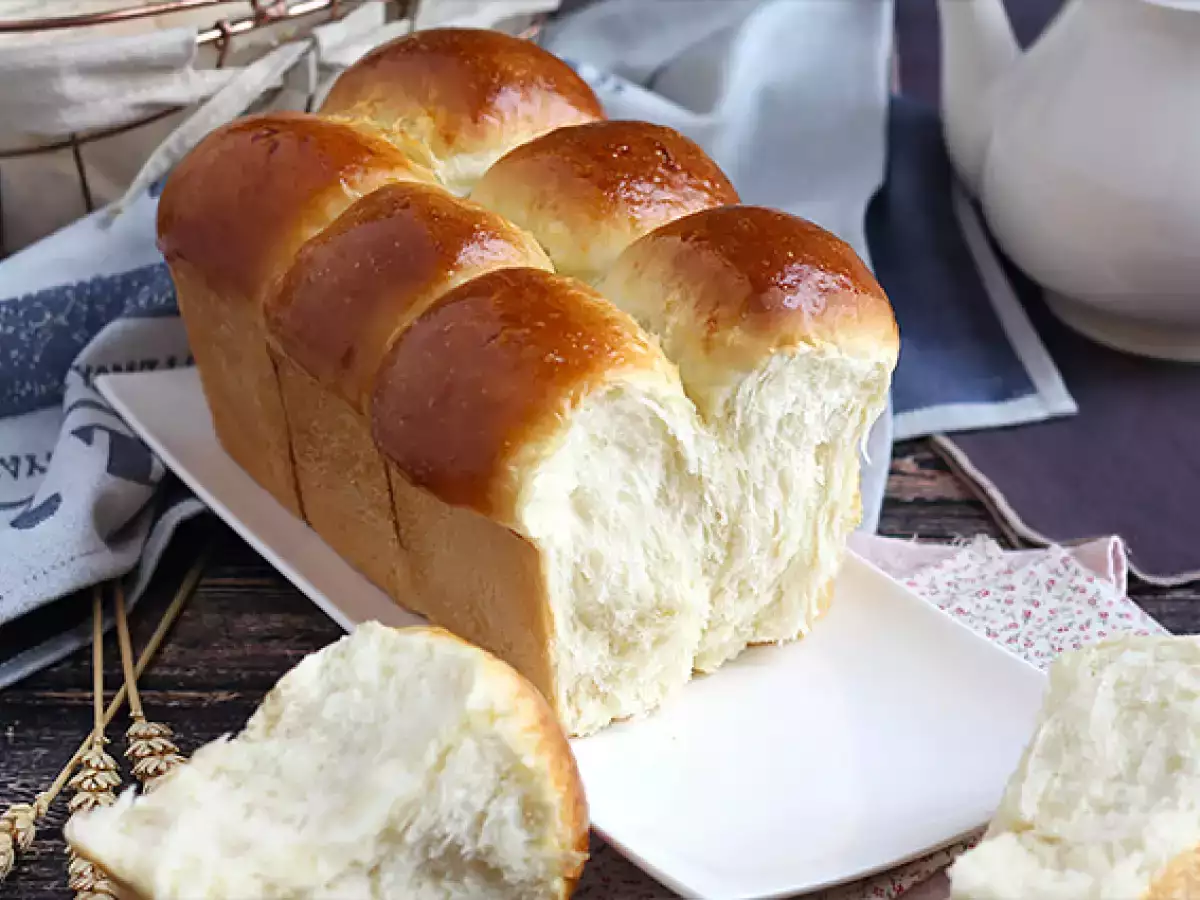How to prepare the fluffiest French brioche: step-by-step recipe for a perfect result

Shiny, golden and with that buttery aroma that fills the kitchen before coming out of the oven, brioche is one of the most evocative doughs in European pastry making. Its light texture and enveloping flavor have made it a French icon, but also a recipe that many regard with respect: it is perceived as a difficult, almost inaccessible preparation.
In reality, brioche does not require expert hands, but a good recipe, some technique, patience and quality ingredients. With strong flour, eggs, butter, a slow fermentation and the following formula, any amateur can achieve at home a result worthy of a Parisian bakery. The essential thing is to allow the dough to breathe, the gluten to form and the butter to do its job. It is a preparation that has earned its reputation: technical, yes, but deeply satisfying when the tender, aromatic bread comes out of the oven.
If the idea of making it has ever stopped you, this text wants to show you that homemade brioche, far from being a challenge, is one of the most rewarding ways to understand cooking: a way to return to the serene gesture of kneading and knowing how to wait.
The secrets of a perfect dough
Brioche belongs to the family of enriched doughs (such as panettone, roscón de Reyes or challah), in which fat, eggs and sugar transform the flour into a flexible, unctuous and slightly sweet material. As in any bread dough, gluten remains the basis of its structure; the difference is that, here, it must coexist with fat and sugar, which slow down its development. Therefore, brioche requires a more delicate balance between air, protein and fat.
Patience is the key. First the dough is worked until it develops a firm and extensible gluten network; only then is the butter incorporated, in small portions and with constant kneading, so that it emulsifies with the dough without breaking its structure. This slow process is what gives the brioche its satiny texture and its very fine, almost stringy crumb.
Ingredients to prepare an ultra-soft and fluffy brioche
- 2 tsp dry baker's yeast
- 1 cup + 2 tablespoons milk
- 4 cups all-purpose flour
- 1 egg
- 3 tbsp sugar
- 1 tsp salt
- 1.5 oz softened butter (or margarine or vegetable oil)
- 1 egg (or milk)
Materials needed
- Rectangular mold (11 inches/28 cm plum cake type)
- A food processor (dough mixer)
- A pastry brush
- Cling film
- Clean and dry kitchen towel
The recipe of the real French brioche
1. Activate the yeast: Place the dry baker's yeast in the bowl of the kneader and dissolve it with a tablespoon of warm water. Let it stand for about 10 minutes at room temperature, until it begins to bubble slightly.
2. Form the base dough: Add the milk, flour, egg, sugar and salt. Knead with the hook accessory for about 10 minutes, until the mixture becomes homogeneous and elastic.
3. Add the butter: Incorporate the soft butter, cut into cubes, and continue kneading for about 10 minutes more, until you obtain a smooth and shiny dough that pulls away from the bowl without sticking.
4. First fermentation: Cover the bowl with a clean cloth and let the dough rest at room temperature for about 2 hours, or until it doubles in volume. Then cover it with cling film and keep the bowl in the refrigerator overnight (about 12 hours) to allow the fermentation to complete slowly.
5. Forming and second fermentation: Take out the dough, knead it gently with your hands to remove excess gas and divide it into 8 equal portions. Form smooth balls and place them two by two in a lightly greased oblong mold. Cover again and let rise another 2 hours at room temperature.
6. Baking: Preheat the oven to 320°F/160°C with fan and place a small bowl of water in the base to create steam. Brush the surface of the brioche with beaten egg and bake for about 25 minutes, until golden brown and with an intense buttery aroma.
7. Cool and enjoy: Remove the mold from the oven and let the brioche rest on a rack before unmolding. Once warm, its texture should be light and fluffy, with a fine crumb and a shine that announces how well done it is.
In the following link you will find all the details of the recipe and a video to follow it step by step:
History of an everyday luxury
Born in Normandy, a land of generous butter, brioche was originally a luxury reserved for celebrations. In the 17th century, bread enriched with eggs and fat was already being made, but it was at the French court that it became famous and became a symbol of refinement.
Over time, this noble dough became commonplace. From aristocratic tables it passed to bakeries and from there to the homes of the world, without losing its essence: its light texture and unmistakable buttery aroma. Today, few products so naturally embody the union between the humble and the exquisite. In France it becomes pain perdu (French toast), in Spain it is the favorite bread for gourmet hamburgers, and in haute cuisine it accompanies foie gras or mellow stews. Its balance between sweetness and softness allows it to move between sweet and savory, homemade and sophisticated.
That same versatility is what you can now take advantage of: for a breakfast that smells like Sunday, French toast with fruit or a soft bread that elevates any recipe. Because brioche, more than a dough, is a way of understanding the pleasure of cooking slowly.
 Patricia González
Patricia González
Comments